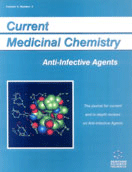Abstract
For nearly six decades, penicillins have been used widely to treat bacterial infections. The development of multidrug resistance, however, has reduced the effectiveness of β-lactams as antimicrobial drugs. A main contributor to b-lactam resistance is the production of β-lactamases, and the development of β-lactamase inhibitors has been one of the main strategies in antimicrobial drug development. In recent years, microbial resistance to existing β-lactamase inhibitors has emerged, spurring investigations in the area of β-lactamase dependent prodrugs that incorporate a bactericidal moiety. In a similar fashion cytotoxic prodrugs have been developed as a means of anticancer therapy. Recently, certain β-lactams have been identified as inhibitors of serine enzymes produced by viruses, fungi and mammals. Development of β-lactam inhibitors of enzymes which have active-site serine, such as human leukocyte elastase, human cytomegalovirus protein, prostate specific antigen, thrombin, herpesvirus, co-enzyme A independent transacylase, γ-aminobutyric acid (GABA) aminotransferase, and human cytosolic phospholipase A2, has attracted interest in all areas of medicinal chemistry. Efforts have been directed toward identification of the structure-activity relationship of the newly developed or modified β-lactams, as well as enrichment of the arsenal of existing methods for asymmetric synthesis and application of novel analytical techniques, such as ESIMS for β-lactam-enzyme complex identification. The present review intends to draw attention to the versatility of the β-lactams as serine enzyme inhibitors.
Keywords: lactam, bacterial resistance, serine enzyme, serine enzyme inhibitor
 6
6

